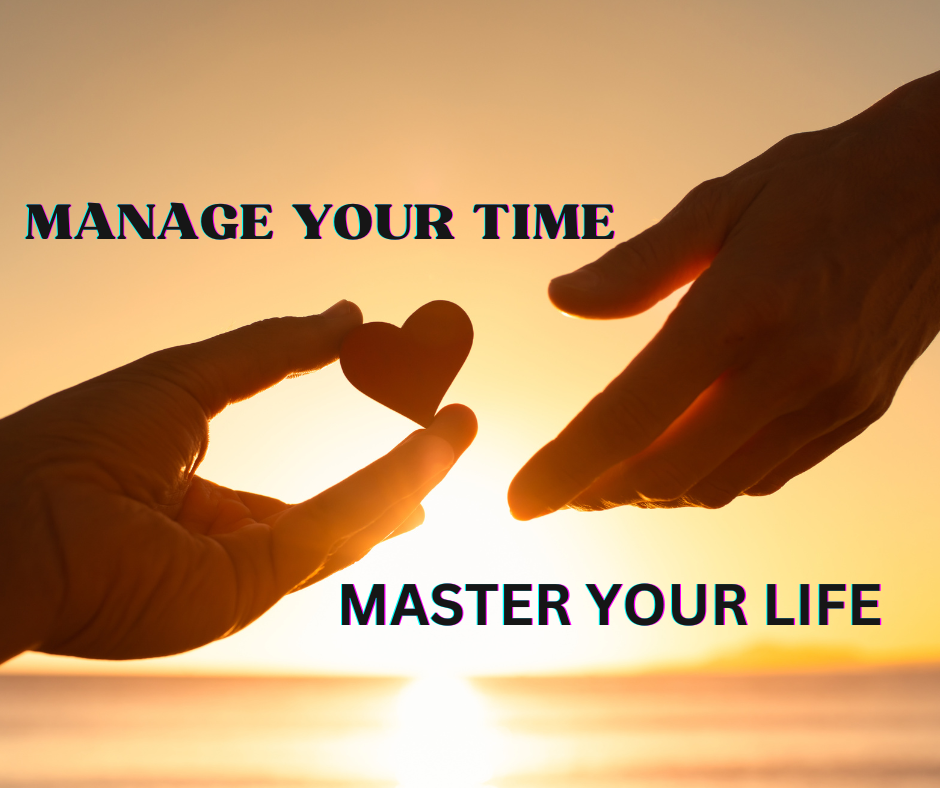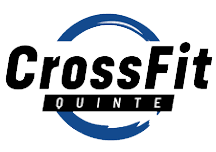Common Pre-Workout Mistakes Everyone Makes
Ulrich Preisinger • January 31, 2025
Common Pre-Workout Mistakes Everyone Makes

Common Pre-Workout Mistakes Everyone Makes
Many fitness enthusiasts, whether beginners or experienced athletes, often make common pre-workout mistakes without realizing it, which can impede their performance and hinder their progress.
The Big Picture:
Hydration: Proper hydration before exercising is crucial; failing to drink enough can result in reduced endurance and poor performance. It is advisable to consume approximately 500 to 600 milliliters of water two hours before your workout, along with an extra 200 to 300 milliliters 10 to 20 minutes beforehand.
Ignoring Body Signals: Ignoring signs of fatigue or minor discomfort while exercising can heighten the risk of injury and burnout. It's vital to recognize when to take a break or adjust your workout for sustained success.
Skipping the Warm-Up: Jumping straight into intense workouts without a proper warm-up can lead to injuries. Engaging in dynamic stretches or light cardio helps prepare your muscles and joints for the workout ahead.
Neglecting Nutrition: Exercising on an empty stomach or consuming inappropriate pre-workout foods can lead to diminished energy levels.
Unlike common belief, it’s not necessary to avoid water during a vigorous workout. Sip water throughout your session to maintain optimal hydration and avoid the adverse effects of dehydration, such as reduced endurance, diminished physical performance, and inadequate recovery afterward.
A Word of Caution Regarding Pre-Workout Supplements
Relying solely on pre-workout drinks can be a significant disservice to yourself.
Many commercially available pre-workout drinks, particularly those with stimulants, are loaded with caffeine — a natural diuretic. This can result in increased water loss from your body through urine or excessive sweating, raising the risk of dehydration during intense workouts.
But that's not all. Overindulging in pre-workout drinks can lead to a variety of side effects. For example, many supplements contain beta-alanine, which may cause an uncontrollable itching sensation for some individuals.
Other common side effects include jitters, energy crashes, and digestive discomfort.
While these costly energy drinks may temporarily mask underlying fatigue, relying on them too heavily can result in long-term nutritional deficiencies.
How To Ensure Optimal Hydration and Nutrient Consumption Before a Workout
Consistent thirst, dark yellow urine, headache or dizziness, and muscle cramps are some of the most common symptoms of dehydration.
Make it a priority to consume 16 to 24 ounces of water for every pound of body weight lost during exercise to help replenish lost fluids. In total, aim to drink at least a gallon of water each day to prevent dehydration.
I completely understand that drinking around four liters of water daily can seem daunting. To make it more enjoyable, consider adding slices of lemon, cucumber, berries, or a zero-sugar electrolyte powder to your water.
While there's nothing wrong with using a pre-workout supplement, it's essential to choose your product carefully. Take the time to learn how to read supplement labels.
Recognizing Your Body’s Signals
Regardless of who you are or how passionate you are about training, there will be days when you feel out of sorts and tempted to skip a workout.
This might stem from a poor night's sleep or perhaps you're dealing with a lingering discomfort. Although the ‘no pain, no gain’ mindset may garner some attention on social media, disregarding your body’s signals can lead to serious consequences.
Feelings of low motivation, energy, and focus, particularly before a workout, are your body’s indicators that it needs additional recovery time.
Ignoring pain and fatigue while striving to exceed your limits in every session can result in injuries or burnout. Furthermore, this approach can impair your performance, weaken your immune system, and lead to overtraining.
Warning Signs
It's crucial to learn how to listen to your body and distinguish between beneficial discomfort and harmful pain. Delayed onset muscle soreness (DOMS) following an intense workout can be a positive sign, but if you struggle to recover after three to four days, it may indicate that your immune system has been compromised.
Keep an eye on warning signs such as an elevated resting heart rate, trouble sleeping, increased irritability, and ongoing fatigue. Regularly assessing these factors can help you prevent burnout and injuries.
Skipping the Warm-up & Static Stretching Beforehand
Starting your workout without a proper warm-up is one of the quickest paths to injury—unless that's your goal.
A well-structured warm-up routine that includes dynamic stretches such as leg swings and arm circles can effectively warm up your muscles, joints, and connective tissues. This enhances blood flow to the targeted muscles and improves overall performance.
If stretching isn’t your preference, you can opt for a brief full-body cardio exercise or do a light set of a few movements in your workout to get your body ready.
At this point, it's worth mentioning that static stretches should be avoided before exercising.
Static stretching involves holding a position for a prolonged period. Research indicates that these stretches can diminish performance and heighten the risk of injury.
Why is this the case, you may wonder?
When your muscles are cold, they lack flexibility and are more susceptible to injury if subjected to excessive tension. Additionally, this can significantly compromise their stability.
Don't Overlook Static Stretches
That said, static stretches are vital during the recovery phase as they can enhance flexibility, alleviate muscle soreness, and encourage relaxation. Some of my preferred static stretches include quad and hamstring stretches, yoga holds, and the Samson stretch. As a rule of thumb, I do dynamic stretches before a workout and static stretches after a workout or at the end of the day.
Neglecting to Fuel Up
In my experience, many individuals tend to avoid eating two to three hours before a workout, fearing potential discomfort during the session. This can be a significant mistake, as it may result in low energy levels, subpar performance, and muscle breakdown. While intermittent fasting and fasted workouts can be beneficial for some, they are not suitable for everyone.
Exercising on an empty stomach can hinder performance due to insufficient energy and may lead to muscle breakdown as the body shifts into a catabolic state. Glycogen, derived from carbohydrates, serves as the primary energy source for your body. Without proper fueling before a workout, and when glycogen reserves are depleted, the body resorts to breaking down muscle tissue to generate energy for sustained effort.
Additionally, low energy levels from an inadequate diet can result in mental fog during exercise. Fluctuating blood sugar levels can negatively affect focus and concentration, ultimately impacting overall workout performance.
Food Hacks for Peak Performance:
To optimize your energy reserves, consume a nutrient-rich whole-food meal two to three hours before your training session. This timing allows your body sufficient time to digest the food, helping to avoid bloating during your workout.
If you can't manage a meal that far ahead, especially for early morning training, aim for a light snack 30 to 60 minutes prior to exercising.
Your pre-workout meal should feature a balanced combination of:
Carbohydrates: Consider options like oatmeal, sweet potatoes, and fruits. Focus on complex carbohydrates to ensure a steady energy flow throughout the day.
Protein: Include foods such as chicken breast, Greek yogurt, eggs, or protein powder, as they are essential for muscle repair and growth, helping to prevent muscle breakdown during workouts.
Healthy fats: Add avocados, nuts, and seeds to support hormone production and provide sustained energy release.
Conclusion:
Common pre-workout mistakes include neglecting a proper diet, failing to drink enough water, skipping a warm-up routine, exercising without a plan, and ignoring your body’s signals.
Evaluate your current routine and begin making gradual changes to give your body the time it needs to adapt. The initial phase may be uncomfortable, but the results will be well worth the effort. I assure you.
Inspiration provided by: Coach Rick CrossFit Quinte
99 Dufferin Ave Trenton ON

Choosing a CrossFit gym over traditional gyms comes with several unique advantages that set it apart from competitors. Firstly, CrossFit offers a sense of community and camaraderie that is often lacking in conventional gyms. Members support and motivate each other, creating an encouraging and inclusive environment. Secondly, CrossFit workouts are highly varied and designed to improve overall fitness, combining elements of weightlifting, cardio, and bodyweight exercises to challenge the entire body. Thirdly, the focus on functional fitness in CrossFit helps improve everyday movements, making daily activities easier and reducing the risk of injury. Fourthly, CrossFit gyms often provide personalized coaching and attention, with experienced trainers who can tailor workouts to individual needs and goals. Finally, choosing CrossFit over traditional gyms can lead to a more enriching and fulfilling fitness journey, characterized by community, variety, functional fitness, personalized coaching, and personal growth. Whether you're a seasoned athlete or a newcomer to exercise, CrossFit provides a supportive environment where you can thrive and reach your fullest potential. Inspiration provided by: Coach Rick CrossFit Quinte 99 Dufferin Ave Trenton, ON

Joining a CrossFit gym can seem intimidating, especially if you're new to the world of fitness or unfamiliar with the CrossFit culture. However, by adopting a few strategies, you can overcome this apprehension and make the most of your experience. Firstly, remember that everyone starts somewhere, and CrossFit communities are known for their supportive and inclusive nature. Reach out to the gym beforehand to learn about beginner-friendly classes or introductory programs that can ease you into the routine. It's also helpful to set realistic goals and focus on personal progress rather than comparison with others. Engaging with the community by introducing yourself and participating in social events can further help you feel more comfortable. Lastly, keep an open mind and embrace the learning process, understanding that it's okay to ask questions and seek guidance from trainers. With time, you'll likely find that the initial intimidation fades, replaced by a sense of camaraderie and achievement. If you're interested in CrossFit, let's connect! Schedule a complimentary Intro to CrossFit Quinte in person or arrange a phone conversation to explore the best options tailored for you! Inspiration provided by Coach Rick CrossFit Quinte 99 Dufferin Ave Unit K Trenton ON Canada

What would you do differently if you could live your life over again? Reflecting on what you might do differently if given the chance to live your life over again can be a profound exercise in self-awareness and growth. Many people might choose to prioritize meaningful relationships, focusing more on nurturing bonds with family and friends, as these connections often bring the greatest joy and fulfillment. You might also consider investing in experiences rather than material possessions, as memories and personal growth can be more rewarding than fleeting material satisfaction. What would I postpone next time around if I could live my life over again? In terms of postponements, one may decide to delay major life decisions until one feels truly ready, such as career choices or starting a family, allowing yourself more time to explore and understand your passions and goals. Additionally, taking the time to travel and explore different cultures when younger could be a priority, as these experiences can broaden your perspective and enrich your life in countless ways. Ultimately, the decision is deeply personal and reflects your unique values and aspirations. Live life fully without limits. Living life fully without limits is about embracing each moment with enthusiasm and an open heart. It involves stepping out of your comfort zone to explore new experiences, whether they are big adventures or small everyday joys. This mindset encourages you to pursue your passions relentlessly, without the fear of failure holding you back. It also means cultivating a positive outlook, fostering meaningful relationships, and being present in every situation. By doing so, you not only enrich your own life but also inspire those around you. Ultimately, living without limits is about finding balance between ambition and contentment, and cherishing the journey as much as the destination. Don’t buy into the limiting beliefs others place upon you. Choosing not to buy into other people's limiting beliefs is a powerful step toward personal growth and self-empowerment. Limiting beliefs are often rooted in fear, insecurity, or past experiences, and they can be projected onto us by others, whether intentionally or unintentionally. By recognizing these beliefs as separate from your own reality, you open yourself up to a world of possibilities and potential. It's important to cultivate self-awareness and confidence, allowing you to discern which beliefs serve your personal development and which ones hold you back. Surrounding yourself with positive influences and seeking out supportive communities can further reinforce your commitment to pursuing your true capabilities, free from the constraints of others' doubts or fears. Remember, your path is uniquely yours, and believing in your own potential is the first step toward achieving your dreams. Be yourself, your true authentic self. Feeling unable to be yourself can be a challenging and isolating experience. It's important to acknowledge that everyone deserves the freedom to express their authentic self without fear of judgment or rejection. Often, societal pressures, expectations from others, or even internal doubts can stifle our true identities. To overcome this, start by identifying what truly matters to you and what makes you feel most like yourself. Surrounding yourself with supportive people who encourage your individuality can also make a significant difference. Remember, embracing who you are is a journey, and it's okay to take small steps towards self-discovery and acceptance. You have the right to live a life that reflects your true self, and seeking open, honest conversations with those around you can be a powerful way to begin this process. Get into world class physical condition, don’t delay health. Achieving world-class physical condition and health requires a holistic approach that combines consistent exercise, balanced nutrition, adequate rest, and mental well-being. Begin by setting clear, realistic fitness goals tailored to your current level and desired outcome. Incorporate a mix of cardiovascular, strength, flexibility, and endurance training into your routine such as CrossFit. Nutrition plays a crucial role, so focus on a diet rich in whole foods, including lean proteins, healthy fats, and a variety of fruits and vegetables to fuel your body efficiently. Stay hydrated and pay attention to portion sizes to maintain a healthy balance. Rest and recovery are equally important, so prioritize quality sleep and allow time for muscles to repair and grow. Additionally, manage stress through mindfulness practices like meditation or yoga. There is never a better time to live your life than today. The notion that there is never a better time to live your life than today serves as a powerful reminder to embrace the present moment with gratitude and purpose. Often, people find themselves trapped in the cycle of waiting for the "perfect" time to pursue their dreams or make significant changes, only to realize that such a time may never come. By focusing on today, we allow ourselves to seize opportunities, learn from experiences, and cultivate happiness in the here and now. This mindset encourages us to let go of past regrets and future anxieties, fostering a more mindful and fulfilling life. Every day is a chance to take steps toward personal growth, connect with loved ones, and make a positive impact on the world around us, reinforcing the idea that the present is indeed a gift. Inspiration provided by Coach Rick CrossFit Quinte 99 Dufferin Ave Trenton Ontario


